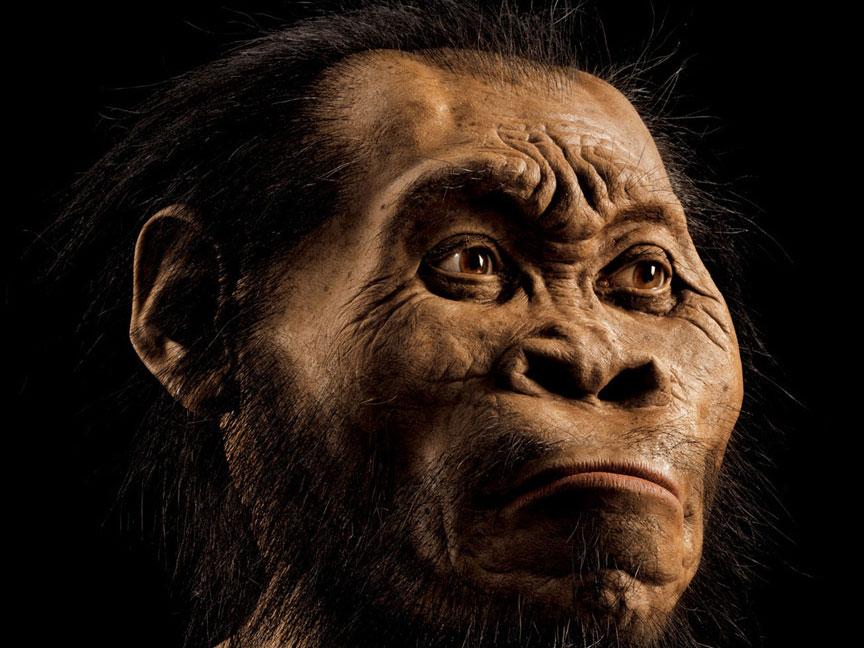Primitive humans with a third of our brains were not wiped out but lived alongside us for millennia
‘It awes me that we may be seeing the deepest roots of human cultural practices’

A primitive form of hominid thought to have died out as modern humans evolved appears to have lived among us for years, new research into an extraordinary set of fossils suggests.
Homo naledi had a brain just a third the size of ours and it had been thought they must have become extinct as they were out-competed by their much smarter cousins.
But, while they may have first evolved up to 2.5 million years ago, the new fossils have been dated to between 226,000 and 335,000 years old, making them incredibly successful in evolutionary terms and putting them close to the earliest known Homo sapiens.
And there is evidence that naledi was more intelligent than scientists believed.
For the fossils were found deep in a cave in South Africa. The palaeontologists had to squeeze through narrow passages for 80 metres in the pitch black to reach a place where they found the remains of multiple individuals.
This suggests these Homo naledi were deliberately ensuring the safety of the bodies of their dead because they cared for them.
One of the researchers, Professor John Hawks, said: “What is so provocative about Homo naledi is that these are creatures with brains one third the size of ours.
“This is clearly not a human, yet it seems to share a very deep aspect of behaviour that we recognize, an enduring care for other individuals that continues after their deaths.
“It awes me that we may be seeing the deepest roots of human cultural practices.”
The sub-species is not the first primitive form of human to have been found living alongside modern humans. Homo floresiensis, dubbed ‘hobbits’ because of their short stature, survived until about 50,000 years ago.
This suggests that other primitive types of human, alongside more advanced ones like the Neanderthals, were much more successful in evolutionary terms – or the impact of the big-brained Homo sapiens was less dramatic.
“It was once commonly believed that no ‘primitive’ species could have survived the intensifying competition from larger-brained humans, with their advanced social and technological behaviours,” the researchers said in a statement.
“Recent discoveries show that this view is false. A diversity of hominin species and populations existed through much of the last two million years.
“Very different hominin forms, some like Homo naledi and Homo floresiensis with small brain sizes, some with closer connections to humans such as Neanderthals and Denisovans, continued to exist.”
The most complete skeleton has been named ‘Neo’ after the Sesotho word for ‘gift’ – the researchers said it was a “coincidence” that this was the same name as Keanu Reeves’ character in the film, The Matrix.
The remains were complete enough to allow the reconstruction of what Neo would have looked like.
“We finally get a look at the face of Homo naledi,” said Professor Peter Schmid, of Zurich and Witwatersrand universities, who spent hundreds of hours painstakingly putting the skull back together.
Professor Hawks said the fossilised Neo skeleton confirmed that Homo naledi “was both an effective walker and climber”.
“The vertebrae are just wonderfully preserved and unique -- they have a shape we've only seen in Neanderthals,” he said.
The research was described in a paper in the journal eLife.
Join our commenting forum
Join thought-provoking conversations, follow other Independent readers and see their replies
0Comments